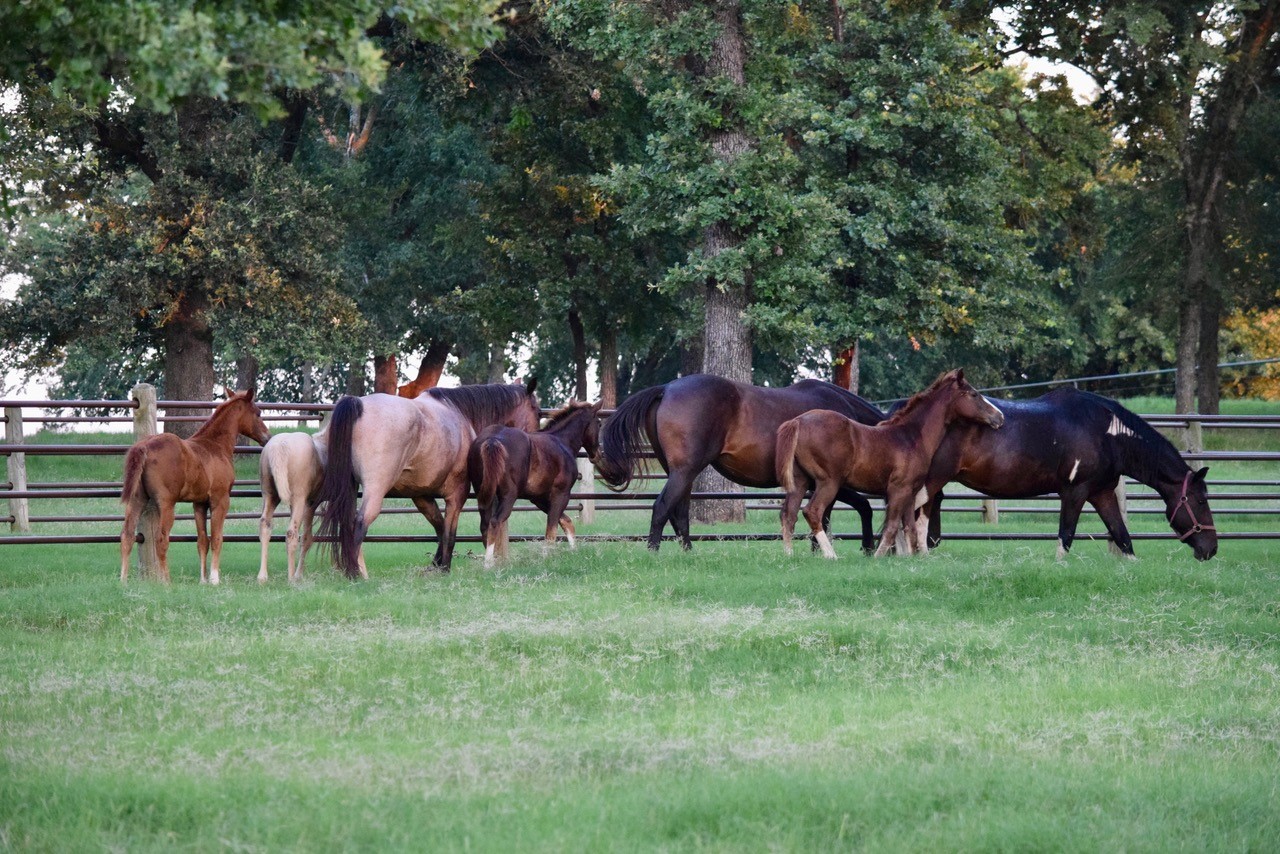Horse owners tend to have as many opinions about the right and wrong ways to do things as there are blades of grass in the pasture. But one thing most horsemen and horsewomen agree on is that hay is for horses. The type you select and how much you feed might differ from horse to horse (as it should!), but there are a few best practices that should come into play, no matter what type of hay you’re feeding or to what horse.
Safety First When Feeding Horses Hay
One thing we can all agree on is this: horses need high-quality hay that’s free from dust, mold and foreign matter. Getting your hay tested regularly (every few months or so) by your local agricultural extension is the best way to determine its quality. You should also do a daily quality check with your eyes and nose to catch any abnormalities. Top-quality hay should be green and sweet-smelling, not dusty, bleached-out or moldy.
Always remove the strings on square bales immediately when you break a bale apart to examine its contents before feeding. The string or plastic that binds together hay bales is irresistible to some horses, who may chew on it out of boredom — or even ingest it entirely. This can lead to very severe health problems for horses, from mere discomfort caused by ingesting (and if he’s lucky, passing) a long piece of string or plastic, to impaction colic. For this reason, it’s imperative to cut off both strings, double them over, and knot them so horses can’t accidentally get a foot through or try to eat strings in the unlikely event that they escape the trash bag.
Feed Hay to Horses Often
Hay can be a true superfood for horses. It’s one of the most common — and easiest to obtain — sources of forage and, when fed correctly, can also do a world of good to support horses’ digestive systems.
That’s because hay can closely mimic the natural feeding and digestive patterns of horses. Horses need to graze on small amounts of forage almost constantly. Hay, which provides fiber, nutrients and vitamins in a relatively low-calorie dose, can be fed in this manner all year round, allowing even horses with zero turnout time a chance to eat like their ancestors. Even easy-keeping horses can benefit from frequent access to hay when you feed it correctly.
How to Feed Horses Hay Safely
In order to gain the most benefit from hay, it’s important to provide it as frequently as possible. Free-choice hay is ideal. If you have an easy-keeper, you might consider avoiding protein-rich alfalfa and clover hay, which is higher in calories than mature timothy or grass hay. You also might consider double-bagging an easy-keeper’s hay net so he has to work harder to get at the hay. Otherwise, keep these general principles in mind when feeding:
- If the ground is grassy and relatively dry, consider feeding hay on the ground to mimic the way a horse naturally grazes. However, if your soil is sandy or gravelly, elevate hay off the ground when feeding via a hay net or manger, as horses can ingest sand or gravel which can lead to impaction colic. Also, consider putting mats underneath nets or mangers for added protection when horses pick at the inevitable bits of dropped hay.
- Don’t just drop a large round bale in the middle of a field of horses and expect they’ll all be able to eat from it. Pecking order dictates that the horse lowest on the totem pole won’t get as much to eat as the bully.
- If you have a pecking-order problem, separate your problem horses into fenced-off paddocks. Or consider making several different piles of hay in the same paddock, separated by 15 feet or more.
- Encourage movement. Frequent movement (again, mimicking the action of all-day grazing) helps horses’ digestive systems work more efficiently — another good reason to spread hay around in several separate piles.
If you’re ever wondering whether or not you’re feeding hay correctly, imagine your horse’s ancestors’ diets. Are you feeding hay slowly, constantly and without encouraging pasture fights? Then you’re probably doing it correctly to help your horse maintain a strong and healthy digestive system.
Was this article helpful? For more like this, join our email list to be notified of new articles and to receive exclusive access to the FREE downloads in our e-book library.




